Interesting Facts Wing Warping

Wright Brothers
Wilbur Wright of the Wright Brothers described man’s quest of flight when he said, “The desire to fly is an idea handed down to us by our ancestors who, in their grueling travels across trackless lands in prehistoric times, looked enviously on the birds soaring freely through space, at full speed, above all obstacles, on the infinite highway of the air.” That’s when the idea of wing warping first appeared,
One fabled tale of Greek Mythology is that of Daedalus and his son, Icarus in search of a way to fly. They planned to escape imprisonment by King Minos on the sunbaked island of Crete by flying from imprisonment using wings made of feathers held together by wax. Daedalus cautiously warned young Icarus to steer clear of flying too close to the sun, but Icarus disobeyed his father’s warning, and tragically the wax in his wings melted and he plunged into the sea, resulting in a horrible death.
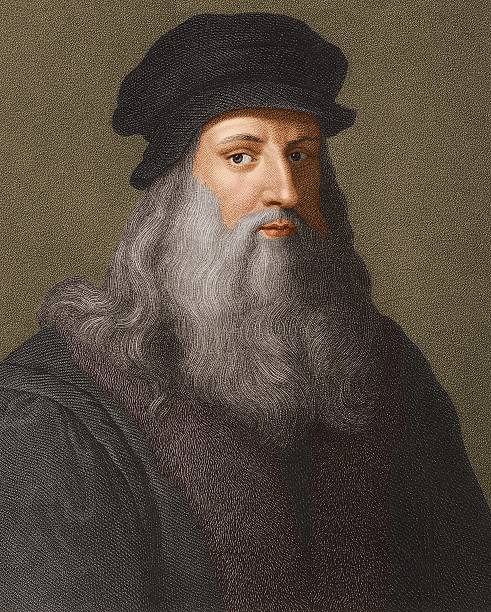
Leonardo da Vinci, Inventor
For centuries man’s thoughts of flying centered on attempting to mimic the birds by flapping wings. However, it was determined that human arms are far too weak to flap wings for the time need to gain the necessary lift, therefore, machines were designed to aid arms or legs to perform flapping. Such machines are known as ornithopters would come to be known as the process to accomplish this ungainly and dangerous task. One of the first known ornithopter designs were made by Italian inventor Leonardo da Vinci during his most creative years from the 1480s until almost his death in 1519. Leonardo diligently sketched a variety of designs in his journals that were based on his and others scientific studies on the mechanism of birds in flight. As far as is known, he never built any of his machines. It would become clear that ideas lacked the key essential of flight, aerodynamic principles.
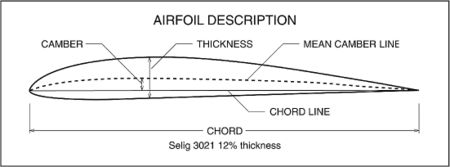
cambered wing
One engineer who followed Leonardo and pushed the vision of flight forward was Englishman, George Cayley. He was the first to advance the concept of what we know as the concept of modern airplane. Cayley thoughtfully defined the problem when he wrote, “Flight is confined within these limits – to make a surface support a given weight by application of power to the resistance of air.” During this time, he published three articles during 1809-10 on his aeronautical research entitled “Aerial Navigation” in which he correctly concluded that lift is generated by a region of low pressure on the upper surface of the wing and cambered wings generate lift more efficiently than a flat surface. Undaunted, in 1853, in his twilight years, Cayley persevered and built a full-size glider. Cayley enlisted the service of his coachman in a flight across a pleasant English valley. Cayley would later design a model glider based on his findings in 1804. His design featured an up-angled front fixed wing and a stabilizing tail. After test trials it was determined that a serious deficiency of his design was the use of “flappers” as the primary means of propulsion. This feature was failed to live up to expectations.
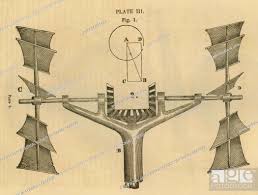
air screws
Meanwhile, a contemporary of Cayley, William Henson, tried to use Cayley’s idea proposed the idea of a practical airplane propelled by a steam engine. The process was known as the Aerial Steam Carriage and he was awarded a patent for it in 1842.His design was the first to utilize for the use of airscrews to power a fixed-wing monoplane. His structural design and bracing system anticipated modern design. In addition, Henson’s design also utilized a separate tail and elevator and cambered wings. The wingspan was a novel 20-feet in length. Henson added two vertical fan wheels back of the fixed wings that were powered by a lightweight steam engine to propel the machine through the air. A small model was built of the machine. However, test of this concept was less than fruitful. Further test by Henson and others, deemed the steam engine was simply too heavy for the power it produced. Powered flight would have to wait until the invention of a compact gas engine.
Two brothers in the small midwestern city of Dayton, Ohio were beginning their quest for flight at this time. Wilbur sought out information published by Frenchman Octave Chanute, held at the Smithsonian in May 1899. Wilbur wrote, “I have been interested in the problem of mechanical and human flight ever since as a boy I constructed a number of bats of various sizes after the style of Cayley’s and Penaud’s machines.” Wilbur continued, “I am an enthusiast, but not a crank in the sense that I have some pet theories as to the proper construction of a flying machine. I wish to avail myself of all that is already known and then, if possible, add my mite to help on the future worker who will attain final success.” It was obvious that the world didn’t realize how close the little-known brothers were in solving the centuries old mystery of flight. Despite the age difference between Wilbur and Chanute, who, was forty-five years older than Wilbur, the two, over time, exchanged several hundred letters. Chanute was enthralled with the Wrights and visited the brothers at their home in Dayton and https://www.nps.gov/wrbr/index.htm https://www.nps.gov/wrbr/index.htm during their glider experiments.
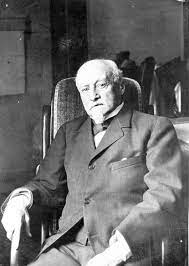
Octave Chanute, Inventor
Wilbur and Orville were the first to zero in on the main problem of flight and were particularly surprised to find that no one had successfully solved the basic problem of flight control. From the beginning of their research, the Wrights knew they had to control rolling and not just pitching as their contemporaries had emphasized. Orville wrote, “When we went to Kitty Hawk in 1900, we thought the fore-and-aft balance the difficult problem of equilibrium. We got this idea from reading Lilienthal, Chanute, and others. They gave very little space in their writings to lateral equilibrium.” The Wright began their march towards destiny by summarily putting their theories of flight into practice by utilizing gliders like others had done before them. The Brothers journeyed to the sandy dunes of Kitty Hawk, North Carolina. Kitty Hawk had ideal weather and winds favorable to gliding.
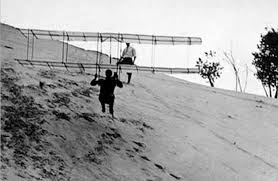
Octave Chanute, Glider
After numerous trial and errors, by 1902 the Wright Brothers had arguably the most sophisticated glider in the world. Their glider version was the world's first aircraft that focused in on three-axis aerodynamic controls. The aerodynamic world would learn of the terms pitch, roll, and yaw in flight with movable surfaces. A small apparatus at the front of the glider, the forward elevator, pitched the nose of the glider up and down around its lateral axis; the wing-warping rolled the wings of the glider around its longitudinal axis, and finally, a rear rudder yawed the nose right and left around the vertical axis. This would be the calling card for the Wrights' pioneer "flying machine" patent in 1906.
Francis Wenham, another nineteenth Century engineer residing in England, designed, built, and used the first known wind tunnel in 1871. His invention was an elongated wooden box with a steam-driven circular fan at one end. His creation demonstrated that two wing principles were in play.A cambered wing was more effective for lift than a flat wing and that a wing’s leading edge provided most of the lift, “Camber is defined as the convexity of the curve of an aerofoil from the leading edge (front) to the trailing edge (back)”. Proving that a long narrow wing would create more lift than a short stubby one. Wenham championed the concept of several wings on top of each other and obtained the first patent on a flying machine that used a stacked wing process. As a result of his work, he became known as the “father of the biplane,” a design used by the Wrights to great success. While the Wright Brothers were key in developing flight controls concepts, however, defining the principles of the aircraft wing from the wooden and fabric twin-wing set up to what we have today is monumental.
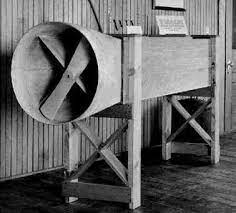
Wright Brothers wind tunnel
Wilbur and Orrville Wright understood from the start that wing design would unlock the door to sustained flight. The wings of their 1900 and 1901 gliders were designed based on the analysis of the aeronautical data reported by famed German aeronautical pioneer, Otto Lilienthal. However, when they measured the aerodynamic lift on their gliders, they found that the measured lift was only one-third of their calculated lift based on Lilienthal’s data. Undeterred, the Wright’s proceeded to carry out their own tests, using a basic wind tunnel they designed themselves. The analysis from their extensive wind tunnel tests showed the important effect of wing aspect ratio on the lift and drag. Aspect ratio is defined as a measure of how long and slender a wing is from tip to tip. Aspect ratio is a measure of how long and slender a wing is from tip to tip. The Aspect Ratio of a wing is defined to be the square of the span divided by the wing area and is given the symbol AR. For a rectangular wing, this reduces to the ratio of the span to the chord length. The formula for this is AR = s^2 / A = s^2 / (s * c) = s / c. The 1900 glider had low aspect ratio wings, aspect ratios of 3.4. The Wright’s increased the length of the 1902 Flyer, thus, increasing the aspect ratio to 6.7 as a result, that glider flew magnificently. And later, the groundbreaking 1903 powered flight Flyer had a aspect ratio of 6.4.
The brothers rightly deduced that the most effective way to control the lateral roll (turn left or right) was the tips of the wings. By manipulating the wing tips, they could be warped in opposite directions, setting up an unbalanced lift force on the two wings, and hence providing a control mechanism to roll the airplane. In other words, if you wanted to turn left you would bring the right-wing tip up (increasing the pressure) and the left wing down (decreasing the pressure down). And vice versa for a right turn. This process proved to be groundbreaking. After a few years, ailerons were employed for roll control in lieu of wing warping. In a further look at the wing itself, the cross-section of a wing taken in the flight direction is called an airfoil. The shape of an airfoil is another important design feature of a wing. As an example, it affects the lift and drag of the wing and has a major effect on the stalling angle of attack (the angle of attack of the wing beyond which the lift dramatically drops off and the drag suddenly increases). The airfoils used by the Wrights were very thin airfoil because their wind tunnel test indicated that very thin shapes resulted in lower drag than thick airfoils. Most airplanes through World War I followed suit and used thin airfoils. The early wind tunnel results were misleading, however, because the wind tunnel models were small and the airflow speeds of the air in the wind tunnels were low.
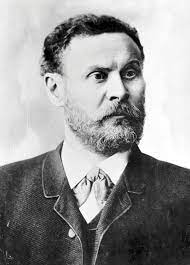
Otto Lilienthal. Inventor
The quest for manned flight took off in earnest in 1783 with the first sustained balloon flight. Nearly one-hundred years, and extensive trial and error, five principles of flight must be addressed. They were (1) Heavier than air. (2) Powered. (3) Steerable. (4) Carry a pilot and (5) Sustain flight. In tackling steering the brothers knew that items turn by tilting much like birds do. In other words, turning one wing up and the other wing down. For their aircraft to be successful they would need to make opposite movements on each wing. Realizing that lift was essential to support an object in the air. This was reflective of Newton’s 3rd law; Which says that every action has an equal and opposite reaction. When flying in a straight line, the wings were tipped back a few degrees, when air would hit them, it would be deflected downwards. And according to Newton’s principles, the opposite of deflecting down is moving the plane up. The wings of the 1903 Flyer were flexible, and the brothers’ attached cables to each wing tip that were connected to pedals used by the pilot. When the pilot pushed down on a cable it would shorten the cable on one side and lengthen on the other side.
As the cables lengthened or loosened, the wings would twist. Which summarily changed the angle each one made in the air. The Wright Flyer was the first aircraft capable of changing its orientation along any direction. As aircraft be more heavier and rigid wing warping was no longer possible. However, they still use the concept of asymmetrical lift to make a plane roll. This process helped the brothers achieve safe and reliable flight, paving the way for future development. What was even more remarkable in their age of discovery, was that failure often meant death because of crashes. It is an tribute to the brothers that through patience, detail and safety upmost in their test, they lived to see and enjoy their ac.complishments.
If you enjoyed this informative article, please feel to join my Facebook Group - Evolution Of WW2 Fighter Aircraft
You can now view our store apparel at our Apparel Store